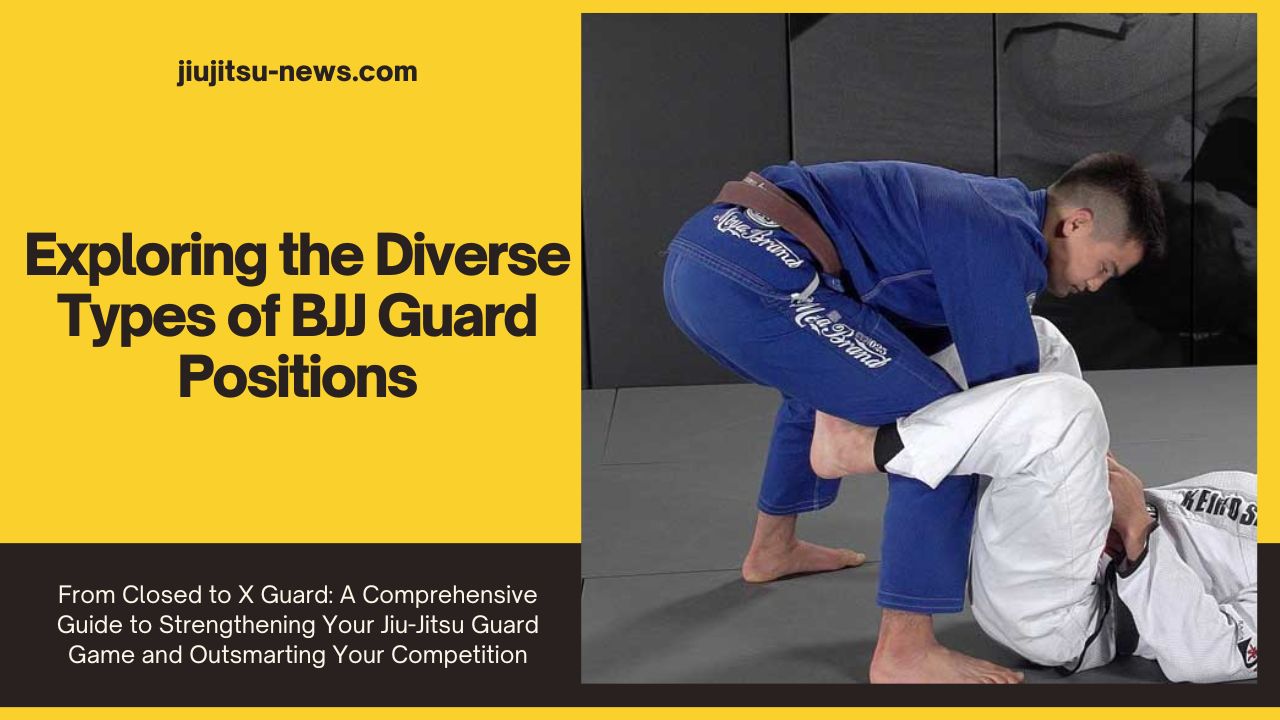Hey there! If you’re diving into Brazilian Jiu-Jitsu, you’ve gotta mix it up to stay ahead of your rivals. A killer way to do that? Get good at different BJJ Guard Positions.
Think of your guard as your personal defense system—weak ones leave you open for trouble, but strong ones put you in the driver’s seat, letting you dictate the fight and launch attacks.
For newbies, there’s no one-size-fits-all guard. You’ve got to try out a bunch to see what clicks. Start with the basics like the half guard and closed guard, and don’t miss out on others like the spider and butterfly guards.
The Various Types of BJJ Guard Positions
The following are some of the most basic Brazilian jiu-jitsu guards that you should know and master.
Closed Guard

The closed guard is like your BJJ home base. When you wrap your legs around your opponent from the bottom, you’re in control.
It’s a defensive fortress that also lets you go on the attack with sweeps and submissions. From here, you can execute classic moves like the armbar, triangle choke, or guillotine.
The closed guard is adaptable, letting you switch to other positions or set up powerful submissions, making it invaluable in both BJJ training and competition.
It’s effective in MMA for managing opponents on the ground and is a practical choice in self-defense situations against less skilled fighters.
Half Guard
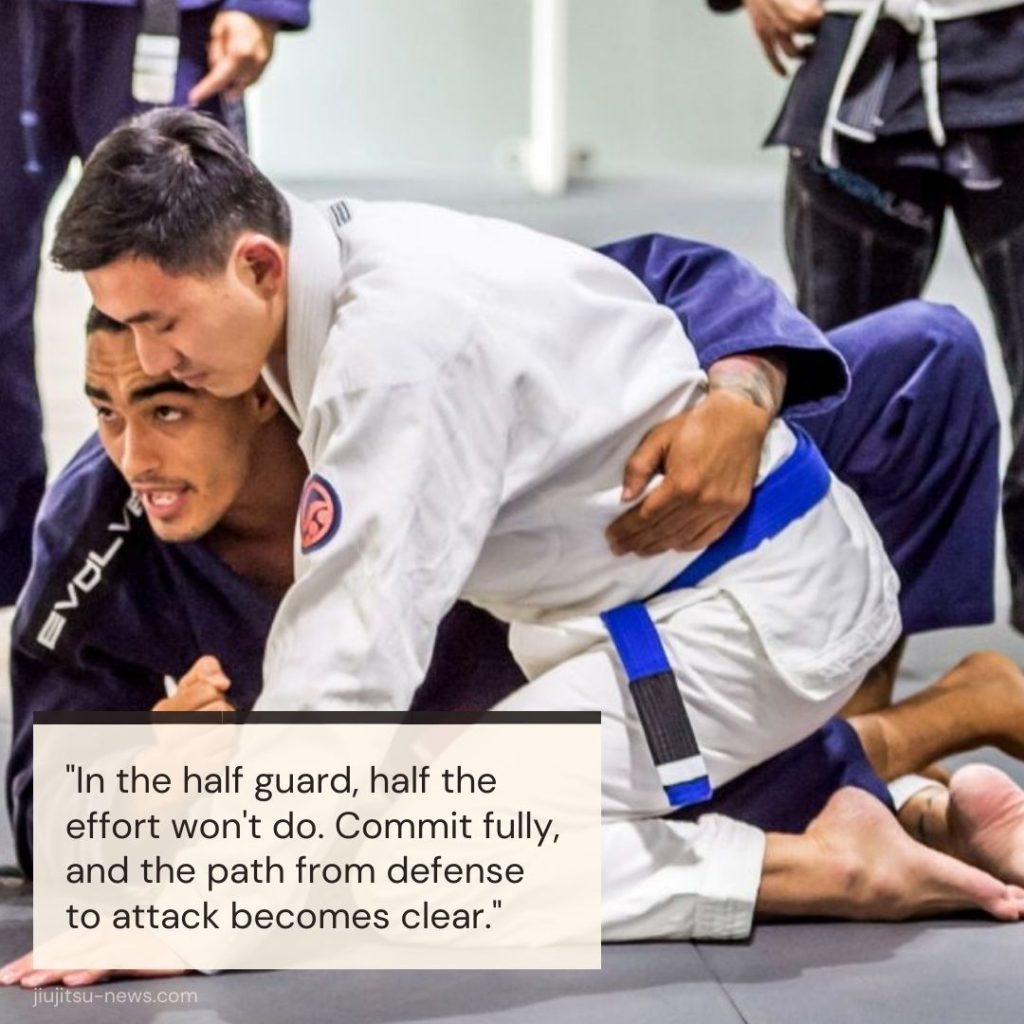
Half guard is all about creativity and flexibility in BJJ. You trap one of your opponent’s legs between yours and use your other leg as a shield to control their movement.
This position opens up a multitude of attacks, sweeps, and defensive maneuvers, making it a favorite in both Gi and No-Gi grappling.
It’s the launching pad for techniques like the Kimura lock or the coyote sweep, and it’s especially handy for shifting into deeper guard positions or securing submissions.
Related: This complete article will teach you everything you need to know about the half-guard in BJJ. It explains this guard type in detail and offers some effective attacks and sweeps to help build a savage game.
Rubber Guard

Rubber guard isn’t just cool—it’s a strategic powerhouse in your guard game, demanding high flexibility.
Developed in the no-gi grappling scene, this guard involves pulling your leg across your opponent’s body and securing it with your arm, which controls their posture and limits their ability to strike or escape.
This position is perfect for setting up submissions like the triangle choke or the gogoplata.
While it’s challenging to master, the rubber guard is a game-changer for fighters looking to neutralize opponents with superior control and submission options.
Butterfly Guard

The butterfly guard is dynamic and versatile, essential for sweep-heavy strategies. You sit with your feet inside your opponent’s thighs, using your legs to lift or shift their weight.
This position is foundational for executing powerful sweeps like the butterfly sweep, which can reverse positions under pressure.
It’s also conducive to quick submissions and transitions, making it a valuable guard for both defensive and offensive BJJ players.
The butterfly guard works well in both gi and no-gi settings and is a fundamental part of any grappler’s arsenal who aims to maintain mobility and initiative.
Spider Guard
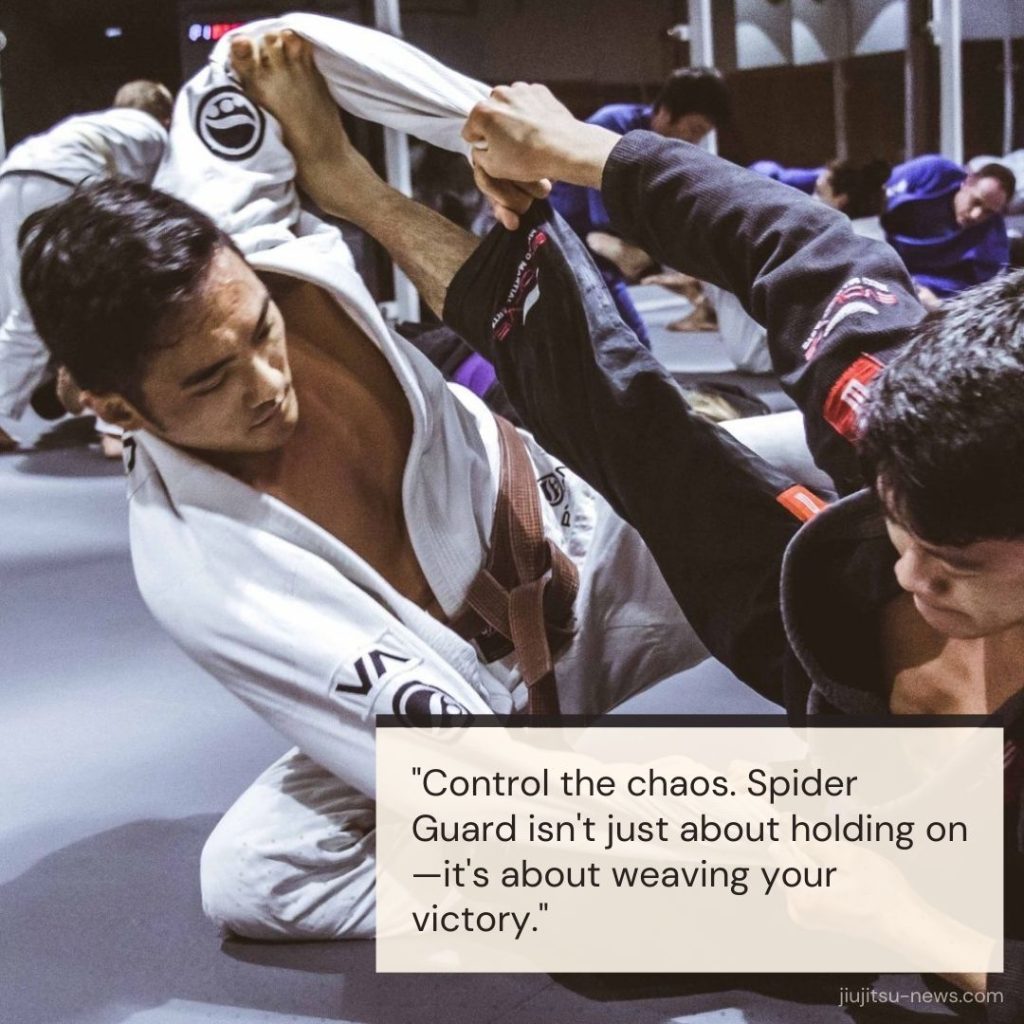
Spider guard is all about control and manipulation.
Using your legs to manage your opponent’s arms, you create significant distance and leverage, which can be used to unbalance and attack your opponent.
This guard is particularly effective for those who like to play a tactical, distance-managing game.
It’s ripe with opportunities for sweeps and submissions, including triangles and armbars.
Perfecting the spider guard can make you a formidable opponent, especially in gi grappling where grips play a pivotal role.
Related: This comprehensive article will teach you everything you need to know about the spider guard in BJJ. It explains this guard type in detail and offers some effective attacks and sweeps to help build a savage game.
DeLa Riva Guard
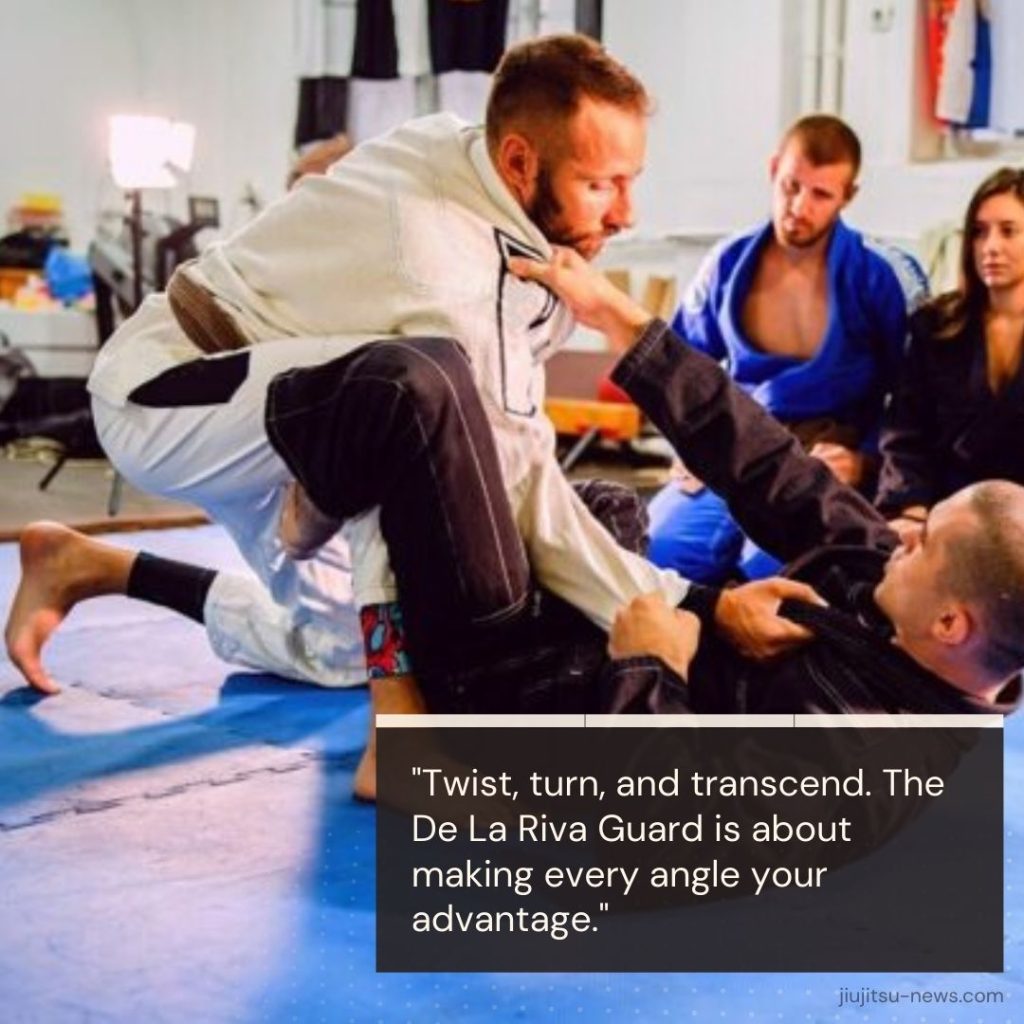
Named after the legendary Ricardo de la Riva, this guard is synonymous with innovation and control.
This jiu-jitsu guard involves hooking one of your legs around your opponent’s leg and controlling their ankle or belt, which creates imbalance and opens up a variety of sweep and attack options.
The DeLa Riva guard is a favorite among competitors for its effectiveness in managing opponents in gi and no-gi scenarios.
Mastering this guard can provide you with a tactical advantage in creating openings and capitalizing on your opponent’s instability.
X Guard
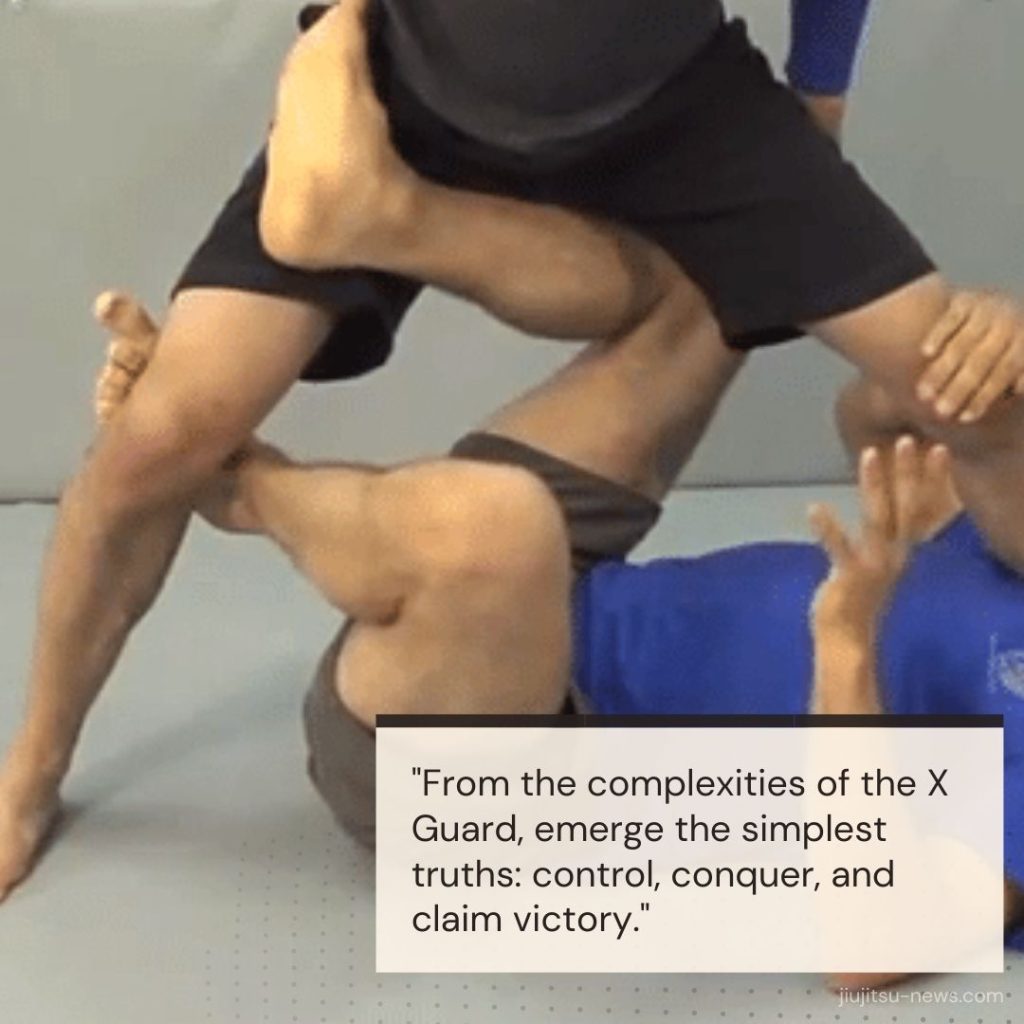
The X guard is a technical and advanced position that places you directly underneath your opponent, allowing for immense control over their movement.
By positioning your legs in an ‘X’ formation around one of their legs, you can execute a variety of sweeps and submissions.
This guard is highly favored by top competitors for its effectiveness against larger opponents, offering numerous pathways to leverage and control.
The X guard is particularly useful for those looking to add a robust and aggressive guard to their grappling repertoire.
50/50 Guard

The 50/50 guard is as fair as it gets—both you and your opponent have equal opportunities to attack.
This guard involves intertwining your legs with your opponent’s in a mirrored configuration, creating a balanced battle of wits and technique.
It’s particularly popular in sport BJJ for its potential to stall opponents and set up leg locks and sweeps.
While it can be controversial due to its sometimes static nature, mastering the 50/50 guard can give you a strategic edge in competition, especially in scenarios that favor leg attacks.
Single-Leg X-Guard
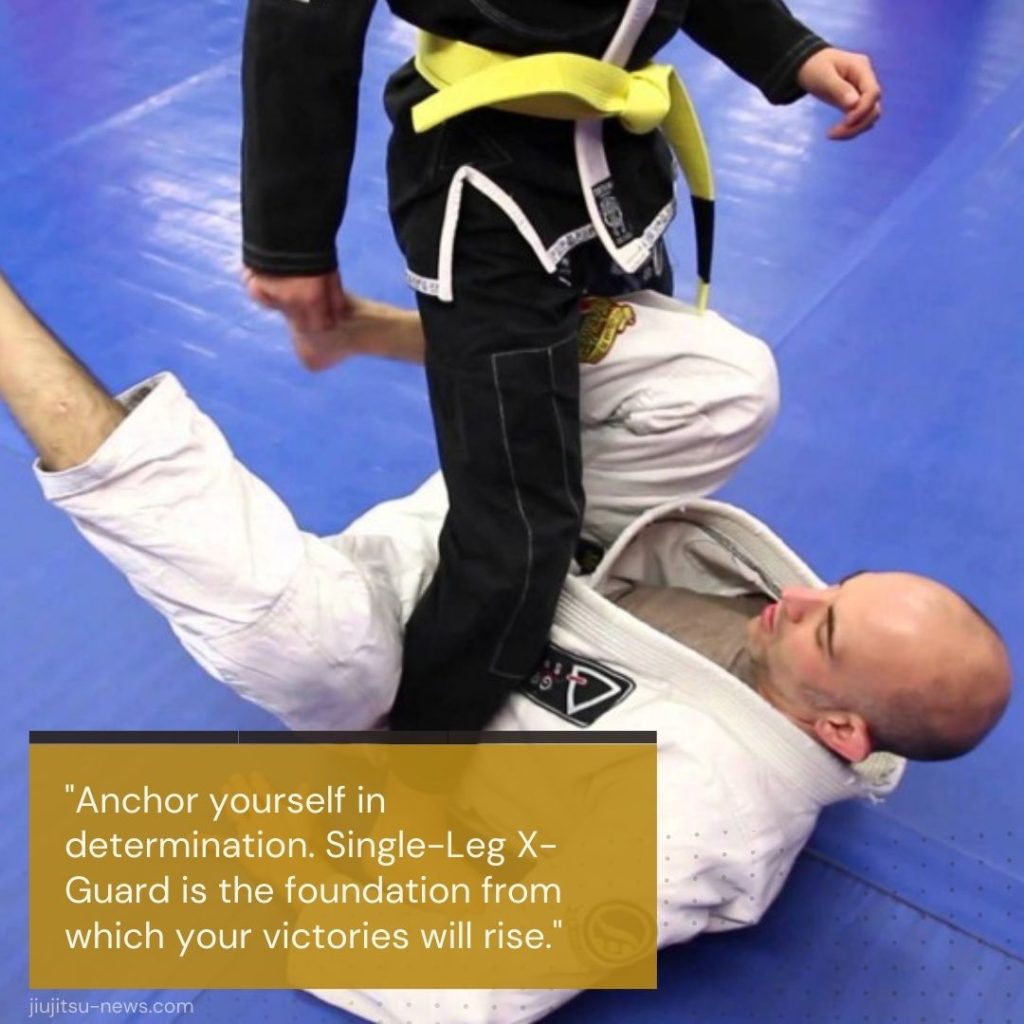
Ideal for beginners, the single-leg X-guard simplifies control by focusing on one of your opponent’s legs.
You use one foot to control their hip and the other to hook their leg, creating pressure and control.
This guard is excellent for setting up ankle locks and sweeps, providing a solid foundation for those new to playing dynamic guard positions.
It’s a straightforward yet effective guard that can be a stepping stone to more complex guards like the full X guard.
Shawn Williams Guard
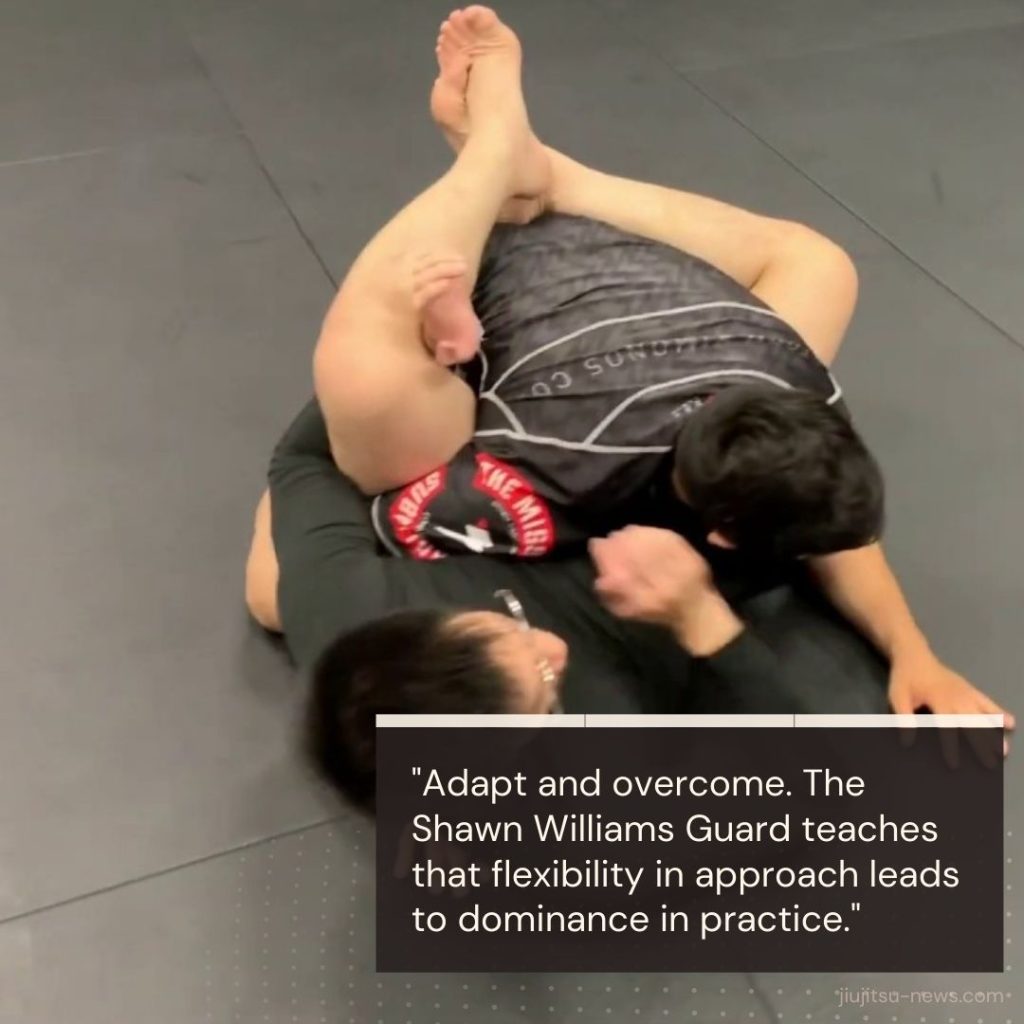
A blend of the closed and rubber guards, the Shawn Williams guard is accessible for those without extreme flexibility.
It offers a unique mix of control and versatility, allowing smooth transitions to more aggressive positions like the rubber guard.
This guard is particularly effective for setting up submissions and maintaining control without requiring the extreme physical attributes other guards may demand.
The Williams guard is a practical addition to any grappler’s guard playbook, providing options for both control and attack.
Conclusion
Every guard type offers its own set of tricks and benefits, whether you’re playing in gi or no-gi, or facing a standing or kneeling opponent.
The key to a great guard game? Fast grips and lots of practice with different types to find what fits your style best.
Hope this guide gives your guard game a serious boost and clears up any confusion about the different positions!

